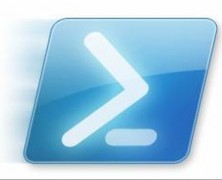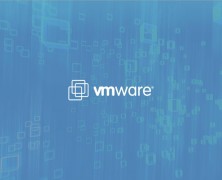Technology changes at a frightening pace; the future is now. Tomorrow arrives unexpectedly and frequently with little regard to the conventions and ideals that made yesterday possible. Mobile devices, the cloud, Bring-Your-Own-Device (BYOD), X-as-a-Service and other Gatneresque buzzwords have reduced traditional PCs and notebooks to a commodity. For Microsoft, this is devastating. Their entire business model was built on traditional PCs and the servers that drive them. Their licensing model, marketing, management and entire corporate culture are designed and refined to support a declining market segment that likely will never see growth again. Microsoft believes that its software has intrinsic value; a license should be paid for every device that accesses software containing Microsoft’s intellectual property. Google believes that software is a means to an end, not an end unto itself; it is the data that is valuable, not the software that manipulates it. Google charges on a per-user basis to access the tools required to manipulate that data. It gives the operating systems away for free. Per device versus per user; the debate over which was more efficient has raged for ages. Microsoft has offered lip service to the concept for decades; however, its licensing models have always leaned towards per-device. Software has device limits for install, Microsoft’s remote-access implementations make you count the number of devices you remotely access your desktops from, and so forth. Microsoft have even recently increased the cost of their per-user licencing by 15% because individuals using that model were (in Microsoft’s view of the universe) getting too much value for their dollar. Back when there wasn’t even a computer for every employee – and families often had a single PC for all members – this view of the world made a sort of sense. End users didn’t...
Pondering a Microsoft-free future
posted by Trevor Pott
Click here to learn more One of the commenters on The Register asked if Windows Server had gone “on a diet” for Server 2012. He was talking about how “bloated” Server 2008 felt compared to previous versions. (Damn you WinSXS! Damn you all to hell!!) I started out with a nice succinct response: “On a diet? No. It’s bigger.” This rapidly went off the rails; however, as apparently I had some bitching to do. The following is some repressed neuroses about Microsoft and the SME space that bubbled out into a text box and was worth preserving for the sheer emotion elicited while typing it. Microsoft’s shifting focus NT thru to 2008 R2 were really good operating systems for SMEs. SME admins are generally people who administer systems rather than merely deploy and apply a configuration. There is a certain level of care and feeding because the cost of things matters. Every license used has to be counted. Every dollar is precious. Server 2012 and 2012 R2 are both operating systems designed for the cloud. Oh, cynics will laugh, but it’s damned true. These operating systems are designed to make Azure work; nothing more, nothing less. I sat through three days of having that drilled in to my head: Microsoft learns something in Azure and bakes it in to Server. Microsoft learns something in Server and bakes it in to Azure. That’s the real reason behind their new “Rapid update” approach to computing. They don’t ever want Azure to get too far out of sync with Server. So if you want to build your own Azure cloud – which is just a download now; comes with Server 2012 R2 – then Server 2012 R2 will let you fling your bits and stand up your...
PS4 vs XB1 at E3
posted by Josh Folland
So, E3 is wrapping up and the internet has been buzzing with new information about everyone’s favorite upcoming titles, the latest developments in the next gen consoles and discussions are taking place online virtually everywhere about whatever caught anyone’s eye. The big talk of this week is the Xbox One vs the Playstation 4. Both Sony and Microsoft have had opportunities to both make an initial announcement on the existence of their console as well as some of the details to get the rumor mill rolling, but after this week we know have a fairly concrete idea of what we’re going to get out of the box. The Xbox One has been receiving a lot of flak over the last week. Microsoft opted to be the first to set the bar by kicking off E3 on early Monday. While Microsoft’s conference in and of itself was not all that bad and they demoed some very interesting new games and technology, it was the tiny details that hurt Microsoft. Already coming off of what many felt an admittedly lousy start from their announcement a few weeks ago (such as the negative reactions to the always-online requirement and used game market DRM), Microsoft had a lot to of ground to make up for in the spotlight; and when the time came the internet piranhas tore them to shreds. The gaming community was not pleased to see this interview. Don Mattrick’s now-famous line “We have an offline device, it’s called the Xbox 360” has been blogged about all over the tubes within hours. Meanwhile, Sony was slated to be last up on the main E3 platform Monday evening and completely stole the show by capitalizing on the golden opportunities Microsoft had laid out for them (I...
How to Improve Powershell
posted by Trevor Pott
What is PowerShell? PowerShell is a powerful tool for managing Microsoft products and operating systems; one whose importance will only grow with time. All components in Microsoft’s Windows Server 2012 have PowerShell APIs. All new Server products (SystemCenter, Lync, SQL, Exchange) whose development started after 2007 are to be completely PowerShell based. The GUIs as exist within Server 2012 or any other products Microsoft produces (with the exception of endpoint operating systems) are merely GUI layers activating PowerShell scripts. Office 365 and Azure are both addressable via PowerShell and even third party applications are by vendors deeply embedded within the Microsoft ecosystem are being coded to be PowerShell friendly. What is the problem with PowerShell? The PowerShell ecosystem is heavily fragmented. Even Microsoft’s own resources are heavily distributed; there is no one place that an administrator can go to research all PowerShell commands. Each application maintains its own documentation resources. Community resources are scattered and rang from scripts to simplification of the often nearly incomprehensibly unhelpful Microsoft documentation to third-party PowerShell modules designed to simplify tedious tasks. (MessageOps’s PoswerShell PST Migrator is an excellent example.) What are the consequences of this issue? This makes creating PowerShell scripts time consuming and research-prone. It makes using PowerShell in a non-scripted fashion even worse. It brings us back to an MS-DOS era of laminated “cheat sheets” and sacred text files filled with arcane strings of code that nobody can but “the guru” can decode, but which are nonetheless vital to the everyday workings of systems administrators. This has dark security implications. Modules that are loaded into PowerShell are often kept in ad-hoc repositories consisting of a simple directory on a file server. They are rarely up-to-date as no automated update mechanism exists. Scripts sourced from...
Account Hacking: It’s bad for you!
posted by Josh Folland
Having your gaming account hacked sucks. There’s no denying it. You’ve elected to spend your free time as well as your hard-earned cash on a game, only to have it plucked away from you is the complete opposite of what you are trying to accomplish by playing the game in the first place. Even if you manage to get the account back, the paranoia will always be there. I for one know this all too well. A few weeks after the launch of Diablo 3 in 2012, account thieves swept the game (conveniently after long enough for me to reach the max level on my main character at the time ). I was one of many, many victims of these thefts and although I hadn’t played Diablo 3 in a few weeks, the theft of my account ensured that I wouldn’t be coming back for a very long time. Full disclosure: I did not have an authenticator on my account at the time. I figured my password (12 characters, upper and lower case with numbers) was secure enough to not need it and I consider myself a technically savvy enough person to not have keyloggers and the like installed on my system. For those of you who aren’t yet in the know: An “authenticator” is Blizzard’s second factor in their two-factor security approach. When you log into the game, you enter you username and password as usual, followed by entering a constantly-changing code generated by your authenticator. This can be its own standalone $10-ish device, or a free app on your smartphone (which becomes problematic if you’re like me and enjoy trying new ROMs on your Android device on a regular basis as the app generates its own unique ID and ties it to...
Microsoft reveals the Xbox One!
posted by Josh Folland
Last week, Microsoft finally unveiled its official entry into the 2013 console war: The Xbox One in an hour-long presentation streamed online. Being a hardcore gamer at heart, even though most of my PC (GOGO PC MASTER RACE) I still have a nerdy obligation to see what the next generation of consoles is going to bring. Xbox has been my primary gaming console for over a decade now. As much as I love PC gaming, there are some console-exclusive titles and even some games that just flat-out run better on a console. Part of me had high hopes for the Xbox One, even if only from the standpoint of “Yay, all of the PC ports will be slightly better now!” I feel like this video sums up the reveal quite nicely: TV, TV, TV, Calladuty, Calladuty, Calladuty, Sports, Sport Sports. The Xbox One is covering me in mainstream. Being a PC gamer who really only ever got into IT because of my interest in the “bleeding edge” of technology, this reveal really didn’t speak to me – which from a raw, pragmatic standpoint makes sense: I am not the mainstream. I am by most definitions of the word a video game “hipster.” …But so are many of the folks in online communities that are going to be taking a very hard look at their new product. Gamers want to play games on their gaming console, not watch TV while holding onto a controller. They want to see new and exciting IPs, impressive leaps in technology and graphics, innovative gameplay and all the other exciting buzzwords that you see floating around when someone is truly blown away. In my experience, this has not been the case with the Xbox One. Instead, it’s received a lot of...
Virtually an expert?
posted by Trevor Pott
The VMware vExpert program offers many benefits to those who participate the in VMware community. If you are a VMware administrator, a pundit who reports on VMware or a company that partners with VMware I strongly encourage you to apply. The deadline to apply for the VMware vExpert program has been extended to midnight PST, April 22, 2013, but that’s right around the corner! I have; let’s take a look at why. What are vExperts? According to the official vExpert 2013 blog post, vExperts are those who have “made some of the most important contributions to the VMware community. These are the bloggers, book authors, VMUG leaders, speakers, tool builders, community leaders and general enthusiasts. They work as IT admins and architects for VMware customers, they act as trusted advisors and implementers for VMware partners or as independent consultants, and some work for VMware itself. All of them have the passion and enthusiasm for technology and applying technology to solve problems. They have contributed to the success of us all by sharing their knowledge and expertise.” That’s a pretty broad brush, so let’s try to narrow this down a little. A vExpert is someone who knows a fair amount about VMware, VMware’s products or VMware’s community. They have in some way contributed to that community; either by advancing the community itself or by cheerleading for VMware and/or her products. Customer Path: This could take several forms; contrary to some common misperceptions, fighting the good fight internal to your organisation counts. If you’re the red tape warrior who downloaded ESXi onto your home network to learn how it works, did your research and went to tilt at windmills to get it deployed they you are a great candidate for the vExpert program. Evangelist Path: You...
On the Relevance of Social Media
posted by Trevor Pott
This was originally posted in slightly altered form on trevorpott.com, in response to comments made on The Register for an article written for that publication. A copy of the original article is posted in Tech Blog under the title Internet: Do you speak it? First: let’s admit that there does not exist primary science that conclusively and definitively pegs the exact percentage of our population for whom a social media site has become “the lens through which they view all content on the internet.” I would go so far as to say that this is A) an impossibility and B) functionally irrelevant. The percentage will be in constant flux as the habits of individuals (and groups) change. But there are a number of studies that have been conducted so far that hint at this, and the reality of it is considered “common knowledge” amongst a certain brand of IPM nerd. The proof will out when the science is done, but studies to really refine the error bars around the exact percent of users for whom this is true are only now getting underway. One person you could talk to about this is Scott Galloway, professor at NYU School of Business. He is considered one of the more notable digital strategy experts. Consider also the numerous studies being done showing how little email is being used by young people, with Facebook rapidly slotting into the role that email once filled. (Many argue that Twitter is slotting into the role that Google once filled.) Dr. Michael Fenichel – amongst many, many others – has done a great deal of hard, primary research into Facebook/Social Media/Internet usage. Indeed, their research has convinced them that Facebook/Internet Addiction Disorder is a very real phenomenon, and should be added to...
Internet: Do you speak it?
posted by Trevor Pott
Get searchable, get on Facebook – or lose your customers This article was first published by The Register on February 24, 2012. The original can be found here. Today I wanted to buy a metal business card case I could carry around in my pocket. I asked Google Maps politely if it knew where in Edmonton I could find such a widget, preferably on the way home. Google didn’t have the faintest clue where I could get such a thing, no matter how delicately I phrased the request. I eventually switched to Google proper, asked Bing and even tried twitter. I only ever really came up with three viable results, all of which were at least 15 km in the wrong direction, and I had no intention of wasting two hours (and $20 of gas) trekking across the bridge in rush hour to pick up a few $10 cases. In a city of one million people, less than a handful of companies spoke enough internet to have relevant search results on Google, and none of them have figured out how to integrate with Google Maps. Local businesses desperately need a lesson in Internet Presence Management (IPM). IPM encompasses the totality of a company (or individual’s) online presence. Far more than simple Search Engine Optimization (SEO), it covers the existence (or lack thereof) of an online catalogue of goods and services, social media usage, and various flavours of astroturfing. While it is traditional for IT types to deride and disparage all aspects of IPM, it has become absolutely essential to the survival of the modern business. Gaming Google isn’t enough; its influence is all too often overstated. IT types like to make jokes about people who believe that the internet is a little blue “e”,...
Live Streaming Solutions for eSports
posted by Josh Folland
This article was originally written by Josh Folland in April 2012 on www.egeek.ca. One of my passions is eSports. As an eSports fanatic, my journey has taken me to the world of commentary . One of the skills that is incredibly useful to have in the world of eSports commentary is a working knowledge of how to run a live stream. This was even more important in 2010 when I began, because the tools were primitive and the ability to use them was a rare commodity. Originally, the way to do things was to use a combination the free-to-use Flash Media Live Encoder (FMLE) to broadcast the stream, the tools inside VH Multi Camera Studio to efficiently and effectively capture what was on your screen, and finally irfanview to add screen overlays such as sponsor logos. These tools are free to use and at the time, they were good enough. Being able to run a live stream of whatever gaming content you wanted from your own home without the need of a $30,000+ telecaster setup was a very new idea; however it was one that entirely redefined the way the 18-34 male demographic consumes gaming-related media. This interested several companies. The creators of VH Multi Camera Studio, Split Media Labs set out to take their product one step further and create an easy-to-use, all-in-one solution for live streaming calledXsplit. Xsplit was free during its initial beta stages but has moved on to a subscription model now that they have released version 1.0. XSplit’s main competition is Wirecast by Telestream, which comes with a much heftier price tag. Each one has some pros and cons outside of the price tag. Wirecast’s interface is absolutely brilliant: built on layers, you can manipulate each scene with maximum...
Microsoft and the Midmarket
posted by Trevor Pott
This post was originally published in a slightly altered version on www.trevorpott.com, October 1, 2012. Microsoft’s licensing is a problem. For a company that makes its bread and butter on the midmarket, they sure can seem hostile to those of us who live and work in this arena. Indeed, Microsoft’s licensing compares more accurately to other enterprise players. Oracle licensing is byzantine and overtly a profit-maximization approach, but they don’t have anywhere near as many SKUs in play as Microsoft. IBM is a good comparison; they have a similar number of SKUs, and no incentive to make their licensing comprehensible to normal people. Contrast VMware to Microsoft as a “complete experience.” Microsoft’s offerings are incredibly powerful. As this review clearly shows, the joined-up nature of the System Center suite can enable a “total package” that overwhelms anything VMware can bring to bear. That said, VMware licensing is simple. Truly understanding Microsoft’s licensing – enough to make sure you aren’t paying a dollar more than you have to – is a career that requires the full time efforts of an intelligent, educated individual. VMware’s products are comparative child’s play to install and administer. It took me three weeks of concerted effort to install a test lab with enough software to test System Center Suite 2012 against its two immediate predecessors. To contrast, it took less than an hour to do the same with VMware. Interaction with Microsoft’s licensing department always leaves me with the impression that I’ve been had; there’s a scam afoot and I’m not the one running it. I can’t speak to how Microsoft treats their customers with over 1000 seats. My customers are all between 1 and 1000 seats. Most are between 50 and 250 seats. What I can say is that in...
A Simple Spam Server
posted by Trevor Pott
This was originally published on trevorpott.com, August 29, 2010. “Simple” is a relative term; this how-to is intended for readers with a reasonable working knowledge of Linux. I can’t afford a really pricy third-party spam filtering option. GFI, Symantec, even Microsoft offer up some pretty robust solutions. They are pricy though, and I don’t see why I should bother fighting that particular funding war when there are some easy solutions available for free. In my particular environment, I run an Exchange 2010 server front-ended by a CentOS box running Sendmail, SpamAssassin, ClamAV and a few others. The first and most important thing is to of course go get the latest and greatest CentOS. As of the time of this write-up that would be CentOS 5.5. Toss it in a virtual machine and install it with nothing but the bare bones. In my case, I gave it two interfaces; one directly externally accessible, and the other on my local LAN. (I trust iptables to keep the baddies out as much as I do any other firewall, so I see little reason to hide the spam server behind a separate firewall and port forward.) Let’s get to the build. 0) Set up your IP addressing according to your own internal schema. Pointing the spamserver at your internal DNS (probably your domain controller) saves you having to build extensive hosts files on the spam server. (It will be talking to your active directory, so using your AD’s DNS is a good plan.) 1) Enable the RPMforge repo. (https://rpmrepo.org/RPMforge/Using) I use this for the simple reason that they have a tendency to keep ClamAV significantly more up-to-date than RedHat (and thus CentOS) do. If you don’t use RPMforge, eventually ClamAV will get so out of date it...
BYOD: Manage the Band, not the Box
posted by Trevor Pott
This post was originally published in a longer form on trevorpott.com on April 7,2012. I have recently been involved in an interesting debate focused on the concept of “bring your own device” computing (BYOD). I argue that no company will go out of business implementing BYOD, while others argue strenuously against the entire concept except under very narrowly limited circumstances. Previous iterations of the argument focused on the costs of BYOD (is it cheaper?), the security (isn’t BYOD a security threat?), demand from end users, and possible resistance from IT. I make the argument in the latter case that there are enough unemployed IT guys out there right now that resistance from IT is functionally irrelevant. IT operations staff are functionally disposable; there are so many of us that for every one you fire a dozen more are willing to step into the position. That varies by region, but I feel that on a global scale this is largely accurate. IT staffing deficiencies are largely in development, Big Data, niche virtualisation deployments, Metal as a Service (MaaS) or in specialisations such as CCIEs, high-end storage and so forth. Sysadmins are a dime a dozen, and this is a fundamental premise to be borne in mind when reading the below. BYOD policy MAY be more expensive, but this is not guaranteed. There are many high profile examples of successful deployments. (Intel and Google spring to mind.) Thus when the business side of the company comes to IT and says “make it happen,” they know it’s possible. The question is “do your extant IT staff have the skill to pull it off properly?” If they don’t, you fire them and you get new IT staff. Think Small Most businesses are small and medium enterprises. They...
Making Websites User-Friendly… Or Not
posted by Katherine Gorham
If you run a business, your website represents you online in the same way that your bricks-and-mortar store represents you in the physical world. This is true whether or not you actually use your website to sell things. (Imagine that someone walks into your business. Even if they are just browsing or asking for a quote, everything that they see and hear while they are in your building contributes to their overall impression of you.) So why is it that anybody who spends even a little bit of time shopping online has run into numerous websites that completely ignore the impression that they are making on customers? I can only guess. Maybe it has to do with the fact that building a website is often a collaborative project, which creates challenges. There could potentially be a whole team of specialists working on the website; programmer, graphic designer, copywriter, and photographer, to name a few. The question that needs to be asked is: has anyone been assigned to take a more general view and figure out if the finished project is doing its job? Judging by some of the websites I’ve used recently, the answer could be “no.” Let me share a web design horror story. Names have been withheld, to protect the guilty, but I assure you that this site exists. You’re doing it wrong An international pizza joint with an outlet near my house has had a sexy website upgrade. It has mouth-watering photography and cool interactive menus. It is also now nearly impossible to order pizza. Here is what happens when you try: 1) On arriving at the site’s main page, you are asked for your postal code. This is presumably so the site can customize the menus you see based...
Choosing office and communications productivity suites
posted by Trevor Pott
Every company needs an office suite; some grouping of applications that allow for document creation. Frequently, these office suite are directly integrated into communications suites. Combined, these applications form a productivity suite. Frequent document types created are word processing, spreadsheets and presentations. Most of the world will know these as Word, Excel and PowerPoint files. There are, however alternatives to Microsoft’s Office suite of applications. Apple’s alternative – iWork – is gaining momentum at a surprising rate. Google Apps is also steadily gaining followers, despite being largely an online only proposition. (Desktop and mobile clients exist, but their current value for content creation is questionable at best.) IBM offers Lotus Symphony while the open source community offers Libre Office, both of them descended from the now largely defunct Open Office. All of these packages can “get the job done,” but some do so better than others. Microsoft’s suite is certainly the most established productivity suite, and with good reason. Office includes Outlook, arguably the single best email client ever developed. Office integrates with a plethora of collaboration and communications software ranging from Sharepoint and Exchange to Lync. These applications in turn integrate with other applications; the “full stack” Microsoft productivity approach is nothing short of amazing. The fly in the ointment is cost. Microsoft is expensive. The advantage to Microsoft is the integration with all the various components, but actually licenceing the totality of those components starts driving the cost per user north of $1500 per refresh cycle. iWork offers only a word processor, spreadsheet and presentation application with their productivity suite, but on the flipside it starts at $80 per user and goes down from there. (Apple volume licenceing starts at 10 users.) This is a critical consideration as Macs are starting to...







